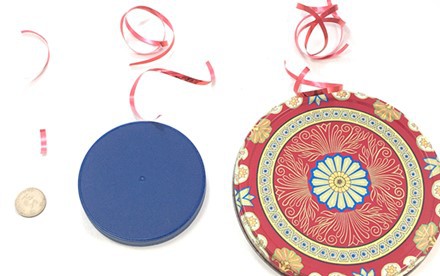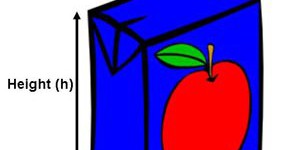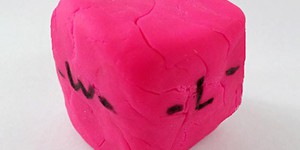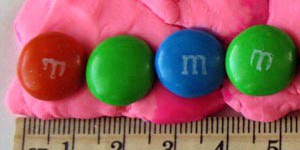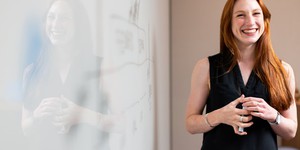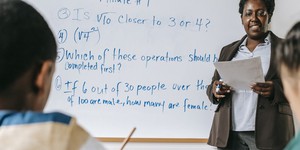Summary
Introduction
Mathematicians look at the world around them in terms of numbers and formulas, and now, you can discover the formula for Pi too! In this science activity you will examine circular objects and see what you can discover about their sizes. As you explore, you might be surprised at how useful the results can be—maybe it will inspire you to save up for a bike with bigger wheels!
Materials
- At least three circular objects of different sizes. Large coins, round container lids, and bicycle wheels work well.
- A roll of twine or ribbon that you can cut into small pieces
- Scissors
- Optional: Tape, such as masking tape
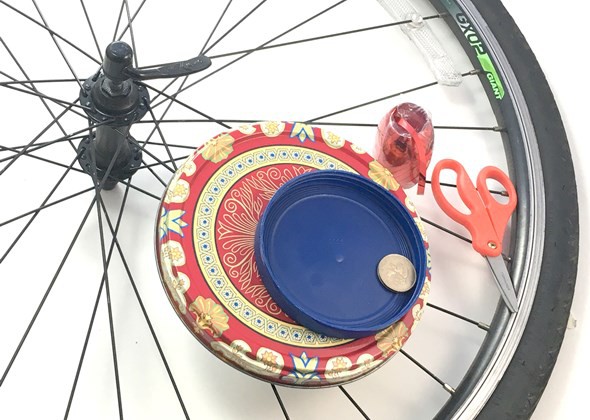 Image Credit: Sabine De Brabandere, Science Buddies / Science Buddies
Image Credit: Sabine De Brabandere, Science Buddies / Science Buddies
Instructions
- In this activity, you will cut pieces of ribbon (or twine) that have the length of the circumference (the line bordering the circle) and the diameter (the line bisecting the circle) of a circle. Once you have those pieces ready, you can start exploring if and/or how they are related.
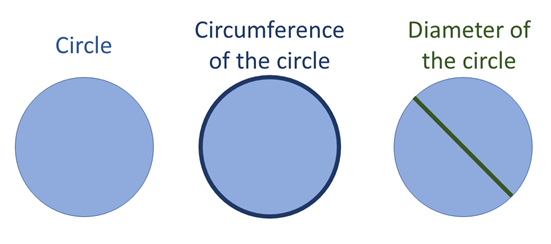 Image Credit: Sabine De Brabandere, Science Buddies / Science Buddies
Image Credit: Sabine De Brabandere, Science Buddies / Science Buddies
- You will repeat this procedure for different sized circles in the hope of discovering that the circumference and diameter of all your examples relate to each other in the same way.
- Start your exploration with a medium-size circle, such as a yogurt container lid.
- To create a piece of ribbon the length of the circumference of your circular object, hold the end of a piece of ribbon, with your thumb, on a point on the rim of the circular object.
- Wrap the ribbon exactly one time around the object and cut the ribbon where the wrapped-around ribbon meets its starting point. To make this a little easier, you can temporarily attach the beginning of the ribbon to the circular object with tape, then wrap and cut the ribbon to that piece of tape.Can you see that the length of your piece of ribbon is exactly the length of the circumference of your circular object?
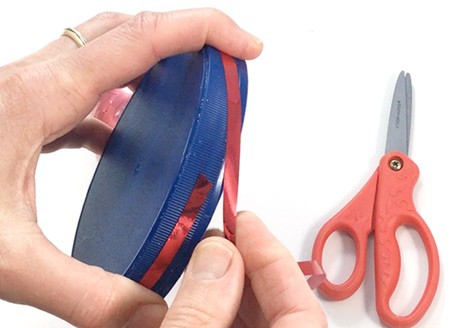 Image Credit: Sabine De Brabandere, Science Buddies / Science Buddies
Image Credit: Sabine De Brabandere, Science Buddies / Science Buddies
- To measure the diameter you need the length of a straight line that starts at a point on the circumference, goes through the center of the circle, and ends at its other side.
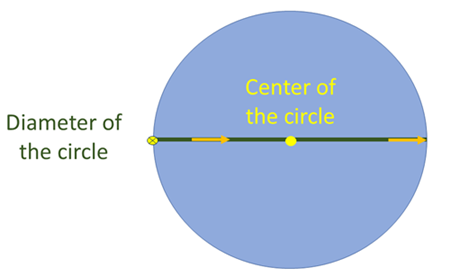 Image Credit: Sabine De Brabandere, Science Buddies / Science Buddies
Image Credit: Sabine De Brabandere, Science Buddies / Science Buddies
- Because it is not always easy to find a circle's center, you will use a mathematical fact about circles, which states that the diameter is also the longest distance across a circle. To create a piece of ribbon with the longest length across the circle use a finger to hold the end of a new piece of ribbon on a point on the edge of the circular object.
- Make a straight line of this ribbon across the circle to another point on the circumference of the circle. Now move the second point along the circumference—to the left and right. Do this until you find the longest straight spanned piece of ribbon possible. When you move the end of the ribbon away from this point, the spanned piece of ribbon gets shorter again.
 Image Credit: Sabine De Brabandere, Science Buddies / Science Buddies
Image Credit: Sabine De Brabandere, Science Buddies / Science Buddies
- Cut off the piece of ribbon where it was longest. The ribbon length is equal to the diameter of this circle.Did you observe that the longest length across the circle went through the center of the circle?
- Now you have everything you need to start exploring.Which distance is longer—the diameter or the circumference? Is it longer by a lot or a little?
- Verify if the longer piece is twice as long as the shorter piece.If you fold the longer piece of ribbon in half, does it fit the length of the other piece?
- If you did not find a good fit by folding the longer piece in two equal sections, see if you get a better fit by folding it into three, four, or five equal sections.Do you get an exact or an approximate fit? How would you describe your findings in words like "twice as long" or "three times as long"?
- Try the activity again with a different sized circular object.
- Repeat the circumference- and diameter-finding until you have explored a small, medium, and big circle.Can you find a relationship that is the same for all the tested circles? Is it an exact or an approximate relationship? If you found a relationship, do you think you have enough data to conclude that your relationship is the same for all circles?
- Optional: A mathematical formula is a mathematical relationship expressed with mathematical symbols like + (addition), - (subtraction), × (multiplication), and ÷ (division).If you found a relationship, can you write it down using mathematical symbols like +, - , ×, and ÷?
- Optional: Think of what you can do with a relationship between the circumference and the radius of a circle.Can you see practical ways where this relationship can be useful?
What Happened?
If all went well, you should have discovered that the circumference was a little more than three times the diameter of the circle for each circle, no matter how small or big the circle was. As a mathematical formula, this is written as:
If you were able to work more accurately, you might have found that it was not exactly three times, but rather three and one seventh the diameter. And even that is not exact. The ratio of the circumference to the diameter of a circle can never be determined precisely! Mathematicians use a symbol, the Greek letter (pi), to refer to it. That is why mathematics books list the following formula for the circumference of a circle:
Accurately measuring the circumference of circular objects like roundabouts, Ferris-wheels, and bicycle wheels is hard. That is why it is common practice to measure the diameter (or radius) and to use the formula above to calculate the circumference.
If you try the "Explore More" activities, you might discover that the distance traveled in one turn of a wheel is exactly the circumference of the wheel. How would this relate to bicycling?
Digging Deeper
People have been studying mathematics for thousands of years. Many mathematical terms we use today originate from Greek and Latin, revealing the origin of some of the ancient scholars who worked on these problems. The word circumference, for example, comes from the Latin words circum (which means around) and ferre (to carry). It can refer to the line bordering the circle as well as to the length of that line. The word diameter is derived from the Greek words dia (across) and metron (measure). It refers to a straight line that starts at a point on the circumference, goes through the center of the circle and ends at the other side of the circle. It can also refer to the length of this line. Mathematicians have proved that the diameter is also the longest distance across the circle and a line that bisects the circle.
 Image Credit: Sabine De Brabandere, Science Buddies / Science Buddies
Image Credit: Sabine De Brabandere, Science Buddies / Science Buddies
Mathematicians found that the ratio of the circumference to the diameter of a circle is a constant, meaning it is the same for all circles, no matter how large or small the circles are. They also discovered, however, that this ratio is a number that can never be determined precisely. Since the mid-1800s, this ratio has been referred to with the Greek letter (pi), which is a remarkably interesting number. It appears not only in geometry but also in other mathematics such as probability theory. It also shows up in the natural world, such as in the description of waves—from the visible ripples on the water to the invisible waves of light and sound.
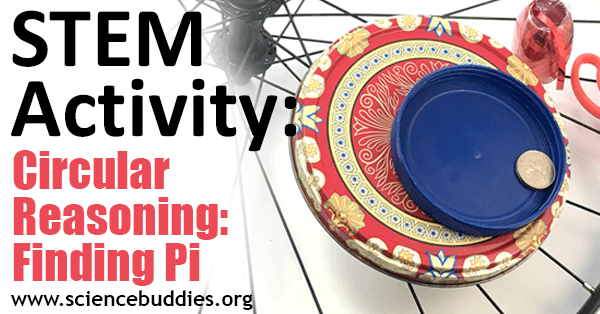 Image Credit: Science Buddies
Image Credit: Science Buddies
Ask an Expert
For Further Exploration
- Look around the house to locate some circular objects and make an estimate of the length of the diameter and the circumference of these objects. Which one was easier to estimate for you, the diameter or the circumference? Which one would be easier to measure with a ruler? Can you now estimate the other one with the relationship you discovered?
- If you found an approximate relationship between circumference and diameter, how could you make it more exact? Hint: you can use a ruler to measure the length of your ribbon pieces and do a little math. For example, try dividing a circumference by its corresponding diameter; try again with each circle. Do you get a similar number each time—regardless of whether the circle size was the same?
- A real-world application of this principle is when calculating the distance differently-sized wheels travel. To explore the relationship between the distance traveled on the ground and wheel size, mark a spot on the circumference of a wheel (such as a bicycle wheel) with tape. Place that spot on the ground and indicate this location on the ground with tape or chalk. Roll the wheel along a straight line until the same spot on the circumference touches the ground again. Mark this location on the ground with tape or chalk. Now compare the distance between the two marked locations on the ground with the length of the diameter and circumference of the wheel. Can you find a relationship? What does this mean for the distance a bigger wheel travels over one rotation compared to a smaller wheel, or for the number of rotations a bigger or smaller wheel might need to travel the same distance?
Related Resources
Project Ideas
Links
- Blog Post: Talking Pi and Pie for Pi Day
- Blog Post: STEM is for Everyone: Nicholas Saunderson, Blind Mathematician
- Prehistoric Calculus: Discovering Pi


